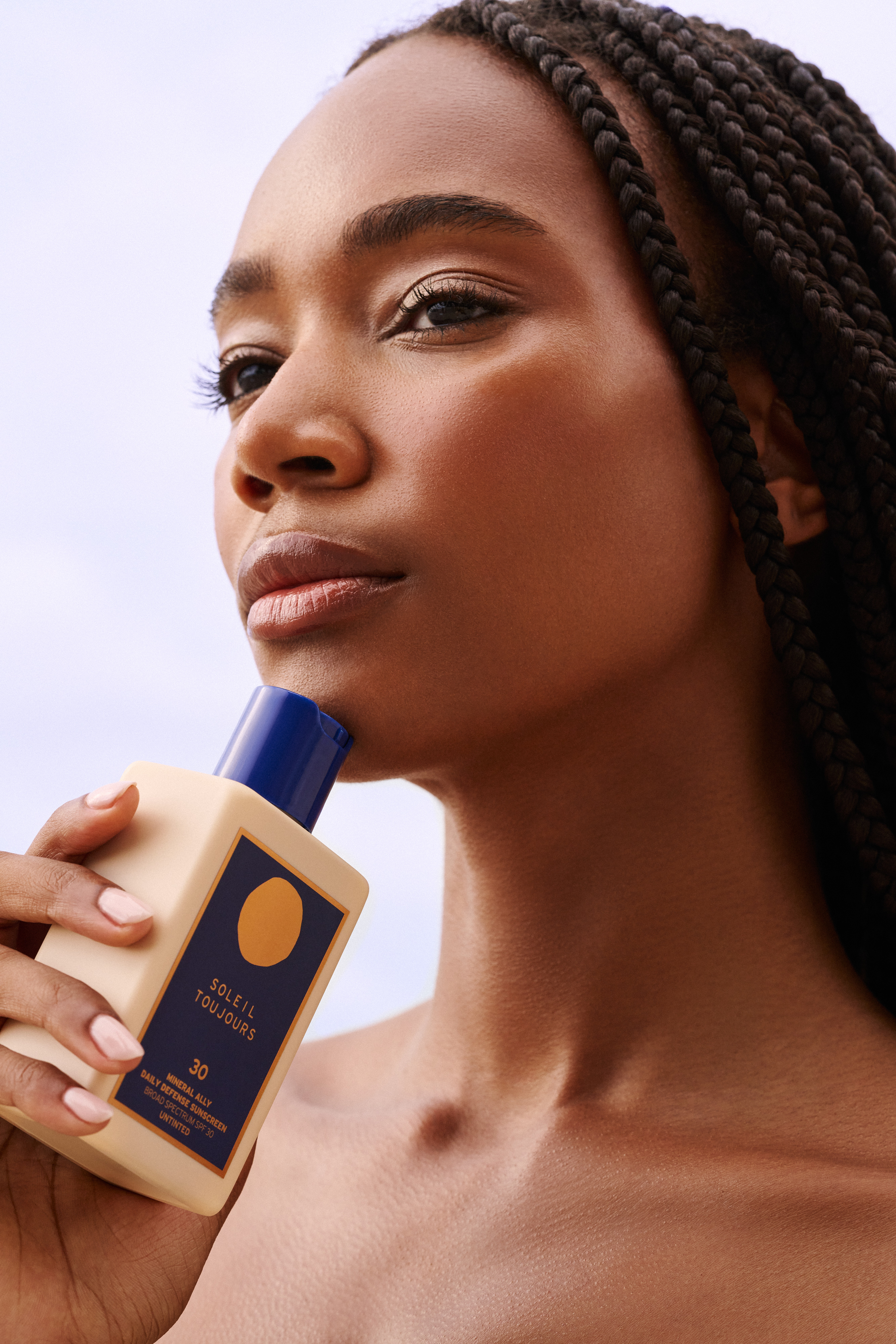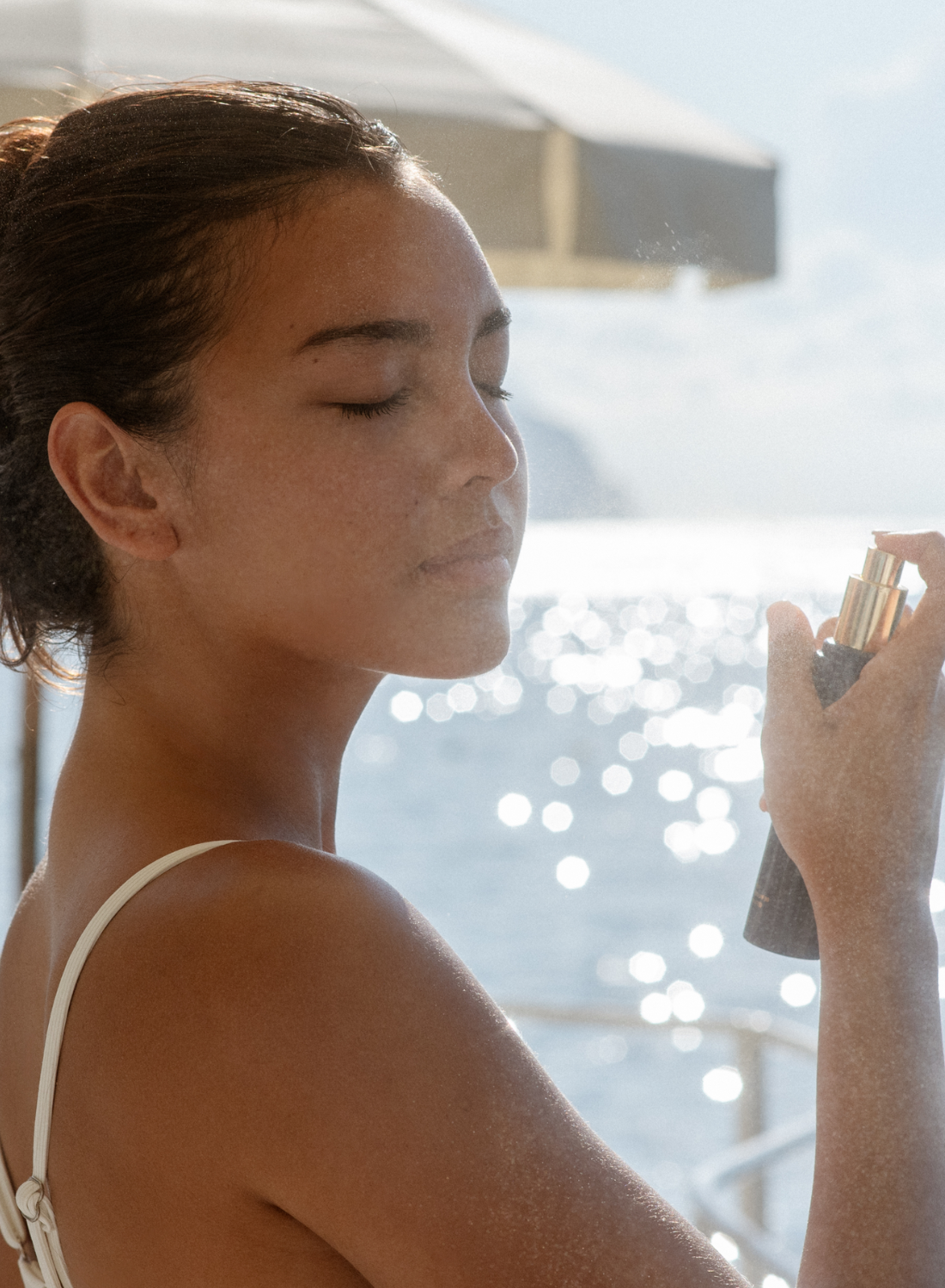Help
frequently asked questions
Product
Simply put, our skin is the largest organ of the body; the substances you put on it can and will be absorbed. The body works harmoniously with natural products and will recognize and metabolize natural ingredients better than synthetic ones.
If your sun care product contains any of the following ingredients, you are exposing yourself to toxic chemicals which can be potentially dangerous to health. We ask, why risk it?
Parabens, Sulfates, Petrolatum/Mineral Oil/ Paraffin, Phthalates, Oxybenzone, PABA, Padimate O, Propylene Glycol, MEA/DEA/TEA, DMDM Hydantoin/Diazolidinyl/Urea/Methylisothiazolinone
Chemical-laden, synthetic formulas are cheaper, easy to use, are abundant in supply and last longer than natural products.
Natural skin care uses botanically-sourced ingredients, which includes ingredients found in fauna, flora, and minerals (otherwise known as animal, plant or mineral). These ingredients must currently exist in, or are formed by, nature, and are manufactured in such a way to preserve the integrity of the ingredients. According to the Natural Products Association, natural ingredients must come from a renewable/plentiful resource found in nature, with absolutely no petroleum compounds.
A chemical sunscreen is absorbed by the skin. Sunlight is deactivated or degraded after contact with the organic chemicals contained in the sunscreen. Chemical sunscreens typically contain a range of ingredients like benzones, aminobenzoic acid and cinnamates that, together, protect against UVA and UVB.
A physical block, in contrast, sits on the skin’s surface and contains inorganic compounds like titanium dioxide or zinc oxide that are not absorbed into the skin. In this case, light is either absorbed into sunscreen material or reflected away from the skin, similar to a mirror or aluminum foil. Ingredients in physical sunscreens protect against both UVA and UVB and, because they are not absorbed into the skin, they are nonirritating and nonallergenic.
Physical block/mineral sunscreens have the best safety profile of today’s choices. They are stable in sunlight and do not appear to penetrate the skin. They offer UVA protection, which is sorely lacking in most of today’s sunscreen products.
Common sunscreen ingredients are suspected or known carcinogens and/or hormone disrupters, including diethanolamine, triethanolamine (DEA, TEA), padimate-o, octyl dimethyl PABA, benzophenone, oxybenzone, homosalate, salicylates, and parabens.
The results of numerous studies suggest that many of the popular sunscreens could contribute to cancer due to their mutagenic and free radical generating properties. Perhaps a more disturbing finding is that many commonly used sunscreen chemicals have strong estrogenic actions that may interfere with normal sexual development and cause reproductive problems. Chemicals in sunscreens can also cause skin irritation and rashes.
Many popular sunscreens contain the chemical ingredient Benzophenone (or its derivatives Benzophenone-3 or Oxybenzone) since it is one of the best of the chemical sunscreens in protecting against both UVA and UVB rays. However, sunscreens containing these chemicals are NOT a good choice. Here is an instance in which the protection may create more harm than good and actually cause the disease it’s trying to prevent. Benzophenone is a powerful free radical generator activated by ultraviolet light. These free radicals could initiate a reaction that may ultimately lead to melanoma and other skin cancers.
Studies show that some of the chemicals in sunscreens are absorbed into the bloodstream in significant amounts. The longer sunscreen chemicals are left on the skin, the greater the absorption into the body. One study notes “it would be prudent not to apply oxybenzone to large surface areas of skin for extended and repeated periods of time, unless no alternative protection is available. There may be an additional concern for young children who have less well-developed processes of elimination, and have a larger surface area per body weight than adults.”
Many sunscreen products contain triethanolamine (TEA). This ingredient may combine with nitrite (used as a preservative or may be present as an environmental contaminant) to cause formation of cancer-causing nitrosamines. Nitrites are not disclosed on cosmetic labels so there’s no way of telling which products are contaminated with nitrosamines. Particularly disturbing is that up to 35 percent of TEA applied to the skin can enter the bloodstream.
An SPF 15 sunscreen blocks 93% of UVB radiation, an SPF 30 sunscreen blocks nearly 97% while an SPF above 50 blocks an estimated 98% of UVB rays. Switching to an SPF 50+, the increase in UVB protection is minimal.
The pros to a higher SPF:
1) Consumers generally do not apply enough sunscreen. To evaluate SPFs, testers apply two milligrams of sunscreen per square centimeter of skin. But in everyday life, most people apply from only 0.5 to one milligram per square centimeter of skin. Consequently, the actual SPF they achieve is approximately 1/3 of the labeled value, so using a higher SPF can be a benefit.
The cons to a higher SPF:
- Increase in UVB protection from a 30 to a 50 is minimal (see % above).
- SPFs only measure UVB protection. UVA protection is also important (UVA not only accelerates skin aging, but contributes to and may even initiate skin cancers). Individuals applying high-SPF sunscreens may not burn (UVB is the chief cause of sunburn), but without UVA-screening ingredients they can still receive large amounts of skin-damaging radiation. To avoid such a scenario, regulatory bodies in Europe and Australia and the US Food and Drug Administration (FDA) adopted UVA testing guidelines and measurement standards, and capped the SPF of sunscreens at 50+. Consumers should seek out sunscreens that have broad spectrum protection. Look for sunscreens that contain zinc oxide and/or titanium dioxide as they provide extremely stable and effective UVA protection.
- High SPFs can give a false sense of security. People tend to stay out in the sun longer because they think they are protected. Sunscreen is only one level of defense against sun damage. Protective clothing, like hats and sunglasses help as well in addition to other measures.
New concerns have arisen about a form of vitamin A called retinyl palmitate, found in 41 percent of sunscreens. The FDA is investigating whether this compound may accelerate skin damage and elevate skin cancer risk when applied to skin exposed to sunlight. FDA data suggest that vitamin A may be photocarcinogenic, meaning that in the presence of the sun’s ultraviolet rays, the compound and skin undergo complex biochemical changes resulting in cancer. The evidence against vitamin A is far from conclusive, but as long as it is suspect, we recommend that consumers choose vitamin A-free sunscreens.
Soleil Toujours sun care uses the safest and most effective FDA approved active ingredients available on the market, the natural mineral, titanium dioxide (TiO2) and Zinc Oxide (ZnO). Titanium dioxide and Zinc oxide are known as physical blockers since they reflect and scatter UV rays. Studies show that TiO2 provides stable UVA & UVB coverage without penetrating healthy skin. Also, TiO2 prevents the formation of a discontinuous film in which patches of exposed skin are subject to harmful UV rays.
Titanium dioxide is derived from titanium, a highly reflective white chalky mineral. In addition to being nonirritating and nonallergenic, titanium dioxide is non-comedogenic, meaning that it doesn’t produce or aggravate acne. The Food and Drug Administration, in its monograph on sunscreens, lists it as one of the most effective active ingredients for sun protection. Zinc oxide also provides physical protection from damaging rays, absorbing primarily UVA light rather than scattering or reflecting it. It is also a mild antimicrobial and wound healing substance and is considered to be non-comedogenic.
In an effort to maintain protection from harmful UV rays, you will want to use your Soleil Toujours products on a regular basis. Our products should be used within 12 months after opening. Because Soleil Toujours’ products are free of the harmful chemical preservatives commonly found in many cosmetics and beauty products (such as butylparaben, isoparaben, methylparaben, propylparaben, benzethonium chloride, BHA, BHT, diazolidinyl urea, imidazolidinyl urea, and methylisothiazolinone) our products shelf lives are not as long as the standard multi-year shelf life. We believe that good health and safety should always come first.
To maintain the integrity of your Soleil Toujours products, please keep them tightly sealed and in a cool, dry place.
No. Soleil Toujours does not partake in animal testing. The products are vegan which means there are no animal derived ingredients in Soleil Toujours products, with the exception of beeswax in our Hydra Volume Lip Masques SPF 15.
We strive to use sustainable, recycled, and biodegradable materials whenever possible. We have committed to replace 95% of all petroleum based plastic packaging with bio-plastic: plastic made with sugarcane, ocean waste and/or PCR plastic. All of our boxes are made with responsibly sourced FSC certified paper.
Order
Yes, you will receive immediate email confirmation once your order is successfully placed.
Please allow 1-3 business days for your order to be processed and dispatched.
Please contact info@soleiltoujours.com ASAP to request an order cancellation. We will do our best to process your request however we cannot guarantee cancellation once your order has been placed.
We only ship to the US at the moment.
Returns
Yes, we are happy to accept returns for any reason within 30 days of your order dispatch date. Note: We do not refund original shipping charges.
Unfortunately we are unable to process exchanges at this time. Please place a return and new order for the product(s) of your choice.
Please initiate your return here: https://shopify.com/7798439/account
Write a clear and Within 14 days of receipt of your returned product(s). answer to guide your customers.
Please contact info@soleiltoujours.com with your enquiry.


